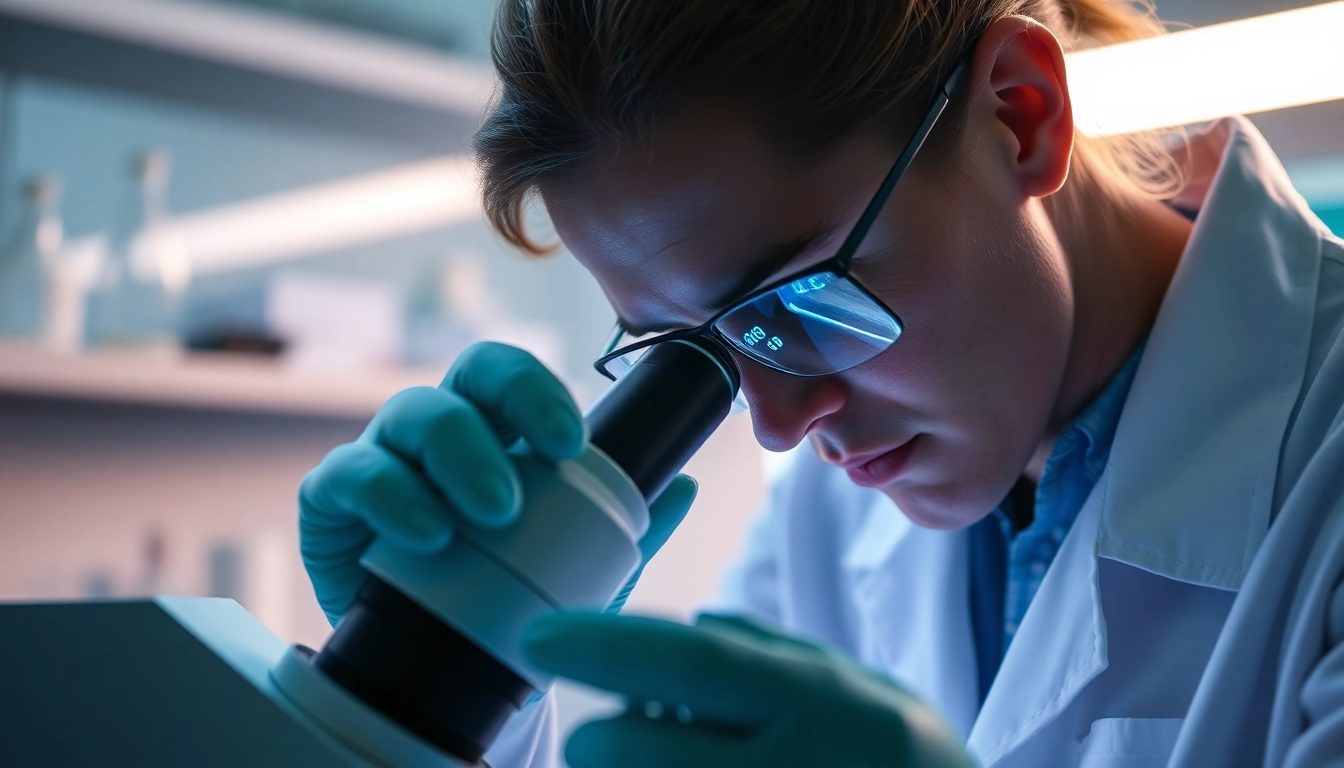Understanding Pluripotent Stem Cells
What Are Pluripotent Stem Cells?
Pluripotent stem cells (PSCs) are a unique class of cells that possess the remarkable ability to differentiate into any cell type in the body, making them essential for developmental biology and regenerative medicine. Unlike adult stem cells, which are typically limited to differentiating into a specific cell lineage, pluripotent stem cells can give rise to the three primary germ layers: ectoderm, mesoderm, and endoderm. These cells can be derived from embryonic sources or induced from somatic cells, leading to the designation of embryonic stem cells (ESCs) and induced pluripotent stem cells (iPSCs). Their versatility allows researchers to explore new therapeutic avenues, including disease modeling, drug testing, and tissue engineering.
Importance of Feeder-Free Culture
Feeder-free culture systems are vital for the growth and maintenance of PSCs, providing a controlled and defined environment devoid of animal-derived substances. This approach minimizes the risk of contamination and variability, thereby promoting reproducibility and enhancing cell quality. The use of defined media, such as the TeSR™ media, offers a more efficient and reliable method for maintaining hPSC cultures. By eliminating the complexities associated with feeder layers, researchers can achieve a more standardized and high-throughput system conducive to both basic research and clinical applications.
Key Applications in Research
PSCs are instrumental in various research disciplines, including developmental biology, regenerative medicine, and pharmacology. Their applications range from in vitro disease modeling, whereby specific genetic alterations can be studied, to the development of patient-specific therapies using iPSCs. Additionally, PSCs are utilized for testing the efficacy and safety of pharmaceutical compounds, allowing for a more personalized approach in drug development. Overall, the versatility of PSCs has empowered researchers to design innovative solutions to longstanding medical challenges.
Overview of TeSR™ Media Family
The Evolution of TeSR™ Technologies
The TeSR™ family of feeder-free media originated from the groundbreaking work of Dr. James Thomson and his team, who successfully established a defined medium for the culture of human ESCs in 2006. The flagship product, mTeSR™1, revolutionized the way researchers could grow pluripotent stem cells, leading to its adoption in numerous studies and publications worldwide. Following this success, the media family has expanded to include several formulations, each designed to meet the diverse needs of stem cell researchers while ensuring high standards of quality and consistency.
Features of TeSR™ Maintenance Media
The TeSR™ maintenance media are characterized by several innovative features that support the optimal growth and maintenance of PSCs. These media are formulated using rigorously pre-screened materials to ensure batch-to-batch consistency, allowing for reproducible results across experiments. Each type of TeSR™ media includes essential nutrients, growth factors, and cytokines that promote stem cell proliferation while maintaining their pluripotency. Additionally, specific formulations are developed to cater to distinct research needs, whether for routine maintenance, differentiation, or cryopreservation.
Comparing TeSR™ Products
The TeSR™ media family offers a wide range of products tailored to different applications in stem cell research. Key products include:
- mTeSR™ Plus: An enhanced formulation that provides superior buffering capacity and stabilized components, enabling extended culture periods without media changes.
- TeSR™-E8™: A less complex medium that contains only the most essential components needed for maintaining hPSCs, promoting simplicity in stem cell culture.
- TeSR™-AOF: An animal origin-free medium designed to meet the requirements of researchers seeking xeno-free culture conditions.
- mFreSR™ and FreSR™-S: Specialized media for the cryopreservation of PSCs that ensure high viability and functionality post-thaw.
Utilizing TeSR™ Media in Research
Best Practices for Stem Cell Maintenance
Effective maintenance of hPSCs relies on following best practices that include precise control of environmental conditions, such as temperature, pH, and oxygen levels. Researchers should regularly monitor the morphology of stem cells, ensuring they maintain a characteristic undifferentiated state. Additionally, utilizing the right TeSR™ media formulations can significantly improve cell health and reduce variability in experiments. Consistently applying protocols for medium changes and passaging is also crucial to sustaining stem cell quality over time.
Reprogramming with TeSR™ Media
The reprogramming of somatic cells to iPSCs can be achieved efficiently using TeSR™ media designed specifically for this purpose, such as ReproTeSR™ and TeSR™-E7™. These media provide an optimal environment for the reprogramming factors to induce pluripotency. Researchers must adhere to well-defined protocols that include the transfection of reprogramming factors and subsequent culture in TeSR™ media, facilitating the generation of high-quality iPSCs. Such practices ensure not only the success of the reprogramming but also the maintenance of the cells’ potential for differentiation into various lineages.
Protocols for Differentiation
Protocols for differentiating hPSCs into specific cell lineages require meticulous planning and execution. The TeSR™ differentiation media, such as TeSR™-E5 and TeSR™-E6, are formulated to support the efficient and reproducible generation of desired cell types, including cardiac, hematopoietic, and neuronal cells. Successful differentiation involves the sequential application of signaling molecules and growth factors tailored to the target cell type. Researchers should evaluate differentiation efficiency through markers indicative of the desired lineage, ensuring that protocols are optimized based on experimental observations.
Quality Control and Safety in hPSC Cultures
Ensuring Consistency with TeSR™
Maintaining the highest quality in hPSC cultures is paramount in stem cell research. TeSR™ media are manufactured with stringent quality control measures that ensure consistency in product performance and safety. This includes thorough testing for sterility, viability, and potential contaminants. Researchers utilizing TeSR™ media can be confident in the robustness of their experimental outcomes, as the media are backed by extensive validation studies and peer-reviewed publications.
Regulatory Compliance and cGMP Manufacturing
The manufacturing process for TeSR™ media adheres to current Good Manufacturing Practices (cGMP), ensuring that products meet the rigorous standards necessary for clinical applications. Compliance with regulatory guidelines is crucial for advancing pluripotent stem cell research toward therapeutic applications. The cGMP environment guarantees that materials are sourced responsibly and that the processing of media is tracked and documented to uphold the integrity and safety of end products.
Challenges in hPSC Research
Despite the advancements in hPSC culture and differentiation technologies, researchers face ongoing challenges, including issues related to genetic stability, potential for contamination, and variability in differentiation outcomes. Addressing these challenges requires an integrated approach combining rigorous quality control, standardized protocols, and comprehensive training for personnel. Researchers are also encouraged to leverage advanced technologies, such as CRISPR and single-cell sequencing, to enhance the precision and understanding of hPSC biology.
Future Directions and Innovations
Emerging Technologies in Stem Cell Culture
The field of stem cell research is rapidly evolving, with new technologies continuously emerging to enhance the efficiency of PSC culture and manipulation. Innovations such as automated cell culture systems, 3D bioprinting, and organoid models are paving the way for more sophisticated approaches to studying human development and disease. These advancements enable higher throughput and greater reproducibility, as well as allow researchers to model complex tissues that more accurately reflect in vivo conditions.
Trends in hPSC Applications
As the understanding of PSC biology grows, so do their applications in regenerative medicine, drug discovery, and personalized healthcare. Current trends indicate a shift towards using hPSCs in developing patient-specific therapies, particularly in treating genetic disorders and degenerative diseases. Collaboration between researchers, clinicians, and industry leaders is vital to translating scientific discoveries into clinically relevant applications, ultimately improving treatment outcomes for patients.
Expert Insights and Research Collaborations
Engaging with experts in stem cell research can provide invaluable insights into current challenges and future avenues of exploration. Collaborative research projects and interdisciplinary approaches are integral to tackling complex issues related to hPSCs. By exchanging knowledge and resources, researchers can foster innovation and contribute to the advancement of stem cell technologies that would benefit both scientific understanding and clinical practice.














Leave a Reply